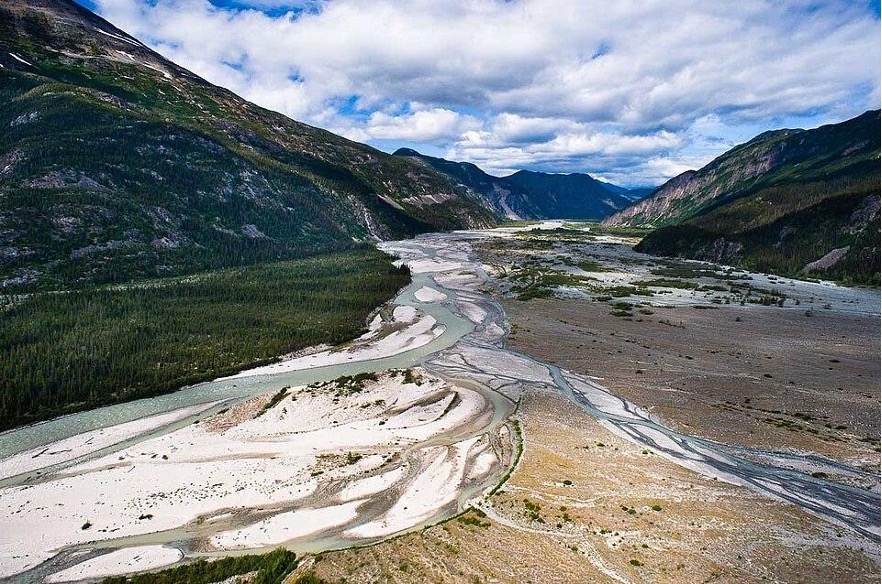
"In 1957, the Tulsequah Chief Mine stopped production of gold, copper, lead and zinc after a short-lived six years of operations. Its legacy has since made it infamous: for the past seven decades, the Tulsequah Chief Mine has leaked a rust-red, mineral-laden runoff called acid mine drainage into the glacial waters of the Tulsequah River. Despite repeated calls from locals and environmentalists and government promises, the acid mine drainage has yet to be cleaned up."
"Like the now-abandoned Tulsequah Chief Mine, the New Polaris Mine sits on the Tulsequah River, which then flows into the Taku River, crosses the Alaska border near Juneau, and eventually drains into the Pacific Ocean. The Taku watershed stretches over 18,000 square kilometers of undeveloped wilderness, an area roughly the size of New Jersey. It is home to all five species of Pacific salmon, which sustain the watershed's rich ecosystem and have long formed a key part of the livelihood of the Taku River Tlingit peoples."
Canagold seeks permits to renew gold mining at New Polaris on the Tulsequah River in northwestern British Columbia. The Tulsequah Chief Mine, abandoned in 1957, has leaked acid mine drainage into the Tulsequah River for seven decades and remains unremediated. New Polaris drains into the Taku watershed, which covers about 18,000 square kilometers, supports all five Pacific salmon species, and sustains the Taku River Tlingit peoples’ livelihoods. The project faces opposition from First Nations, environmental nonprofits, and downstream Alaskan communities. Canagold announced plans in March 2023 and began preparing a B.C. environmental assessment application in January 2025, including Indigenous consultations.
Read at State of the Planet
Unable to calculate read time
Collection
[
|
...
]